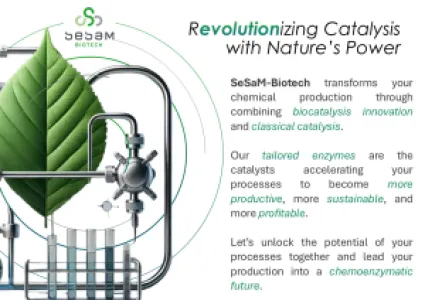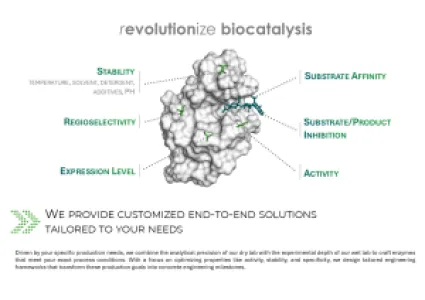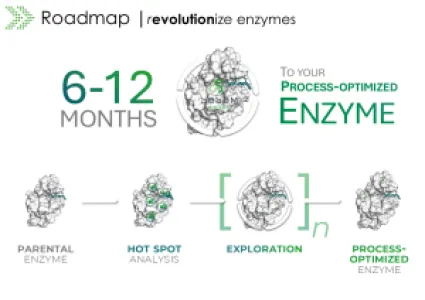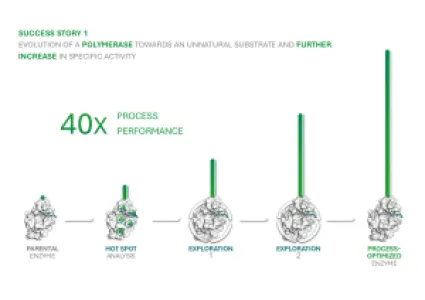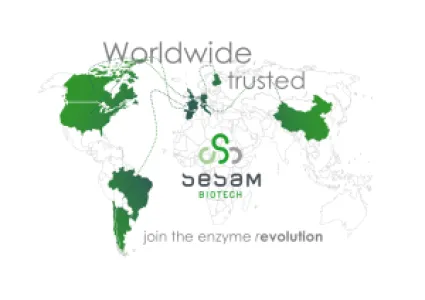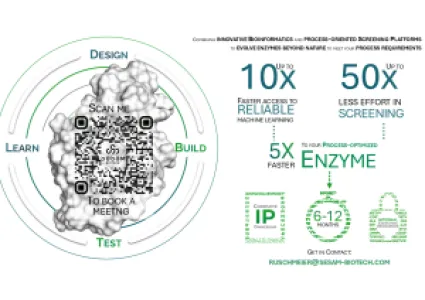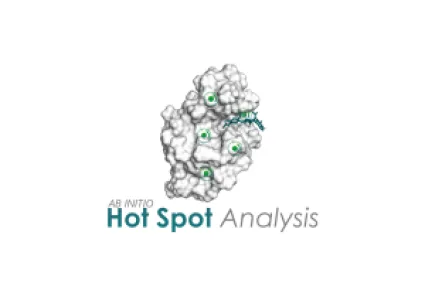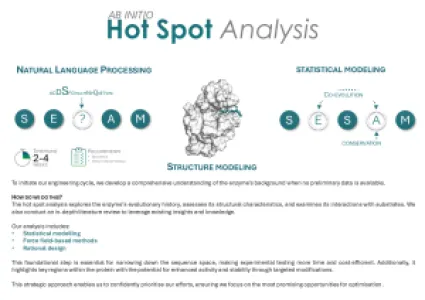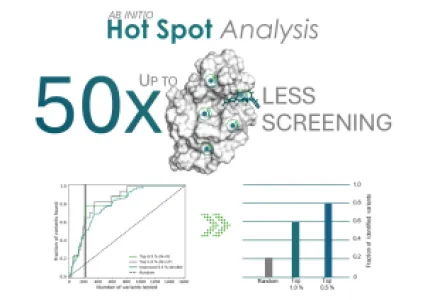SeSaM-Biotech GmbH
Booth number: C114-15
www.sesam-biotech.com
About us
SeSaM-Biotech transforms your chemical production through combining biocatalysis innovation and classical catalysis.
Our tailored enzymes are the catalysts accelerating your processes to become more productive, more sustainable, and more profitable.
Let’s unlock the potential of your processes together and lead your production into a chemoenzymatic future.
Address
Forckenbeckstraße 50
52074 Aachen
Germany
E-mail: ruschmeier@sesam-biotech.com
Phone: +49 174 6132470
Internet: www.sesam-biotech.com
Contact person:
Products & Services
Guided by your operational needs, we combine our State-of-the-Art Bioinformatics Tools and Process-oriented Screening Platforms to engineer enzymes that exactly meet your process conditions. We turn your production targets into our engineering milestones. We provide:
Techno-economical Analysis
Process Analysis
Enzyme Discovery
Protein Engineering
Enzym Analysis
Benchmarking
revolution - Integrated Protein Engineering
Fermentation up to 100L
revolution
innovative Bioinformatics and process-oriented Screening Platforms to evolve enzymes that meet your process requirements.
Our engineering process is executed iteratively: validated wet-lab data guides the design of new candidates through advanced statistical modeling and machine learning. By exploring the protein space in silico, we enhance engineering efficiency and effectivity while accelerating campaign timelines. Each cycle produces improved variants and refines the predictive model.
6-12 months To your Process-optimized Enzyme
Hot Spot Analysis
We give you the hints to kickstart your improvement journey.
The hot spot analysis explores the enzyme’s evolutionary history, assesses its structural characteristics, and examines its interactions with substrates. We also conduct an in-depth literature review to leverage existing insights and knowledge.
Our analysis includes:
•Statistical modelling
•Force field-based methods
•Rational design
This foundational step is essential for narrowing down the sequence space, making experimental testing more time and cost-efficient. Additionally, it highlights key regions within the protein with the potential for enhanced activity and stability through targeted modifications.

